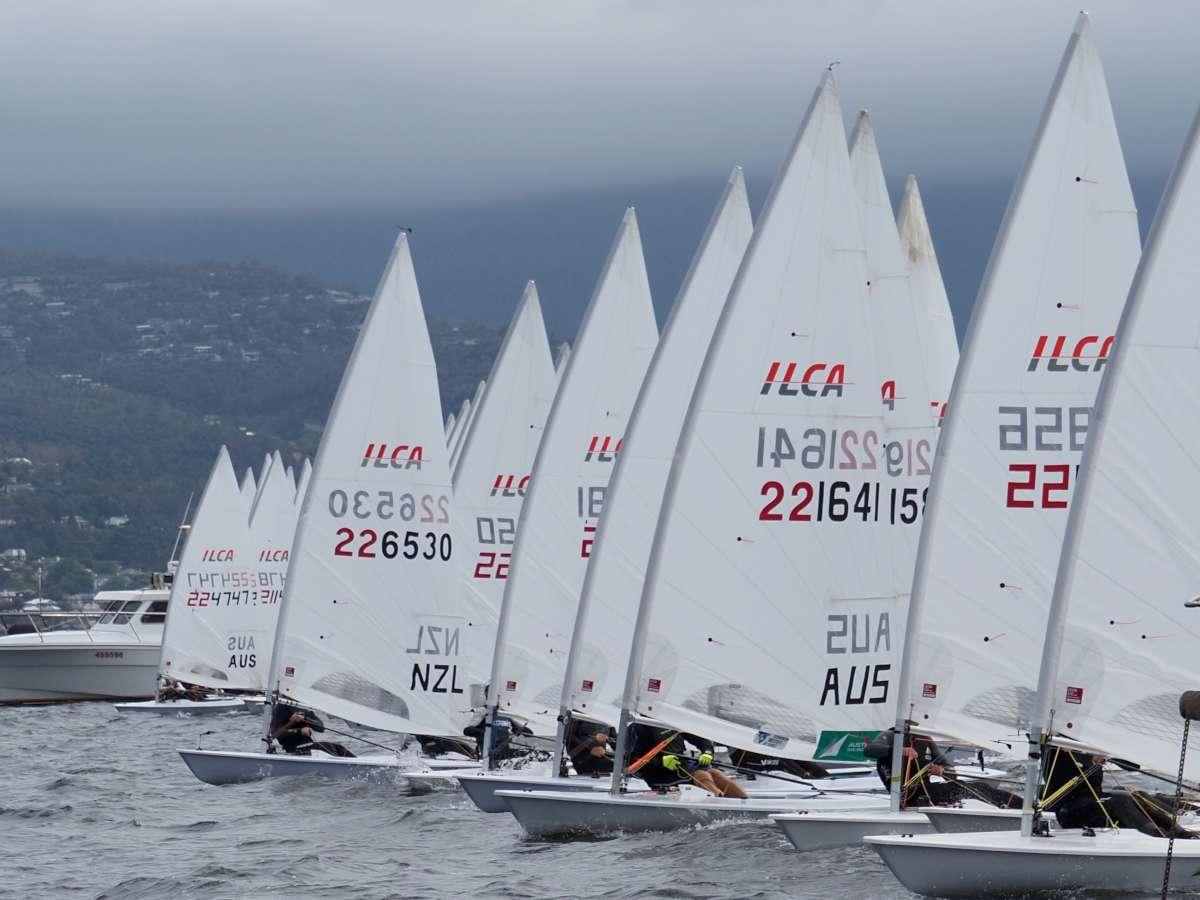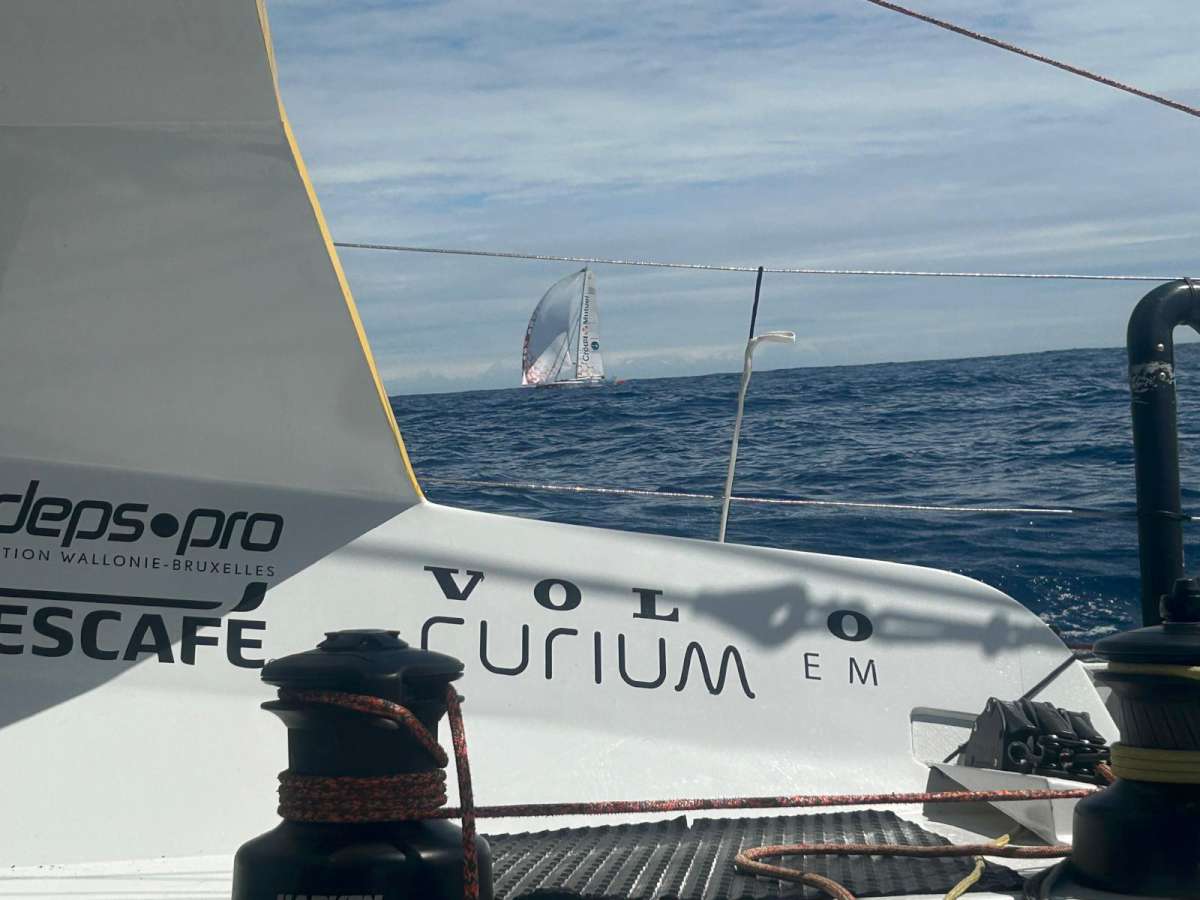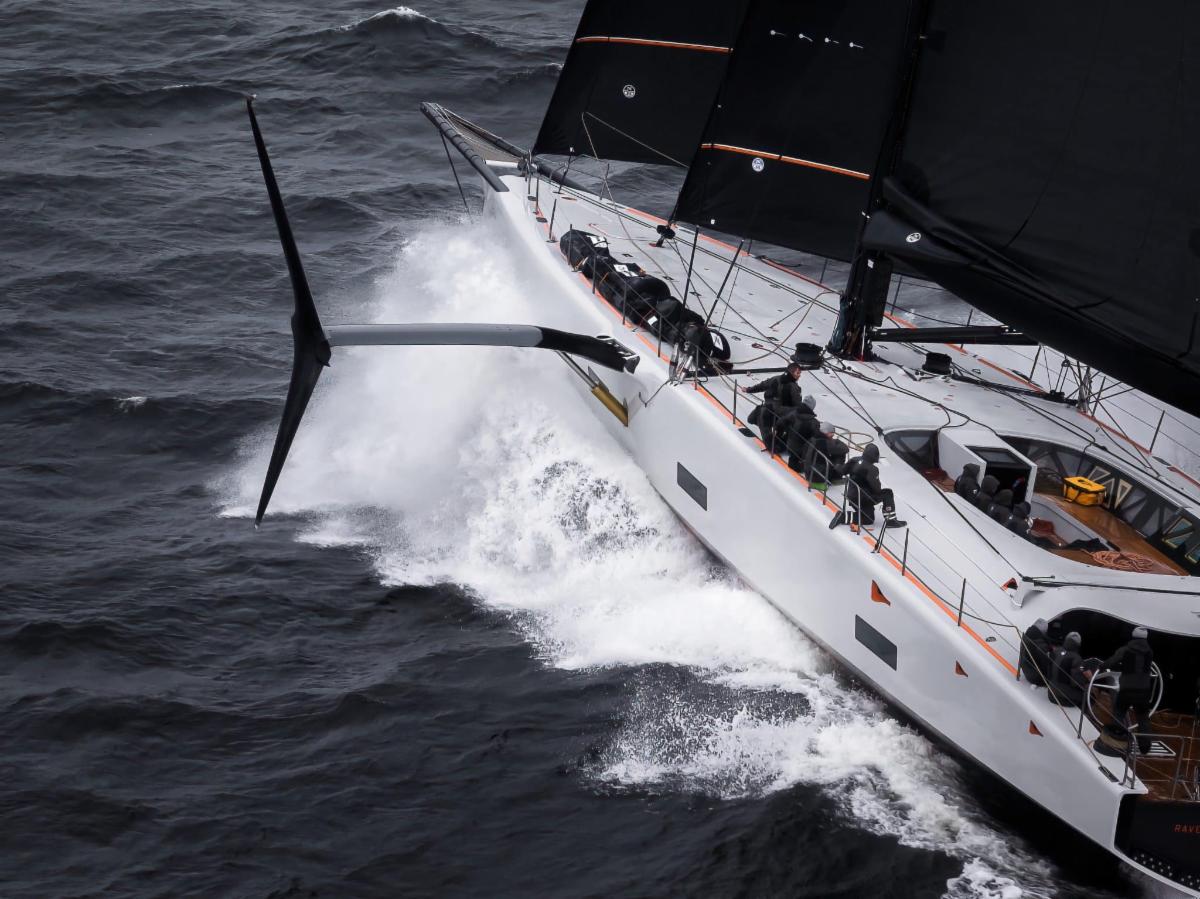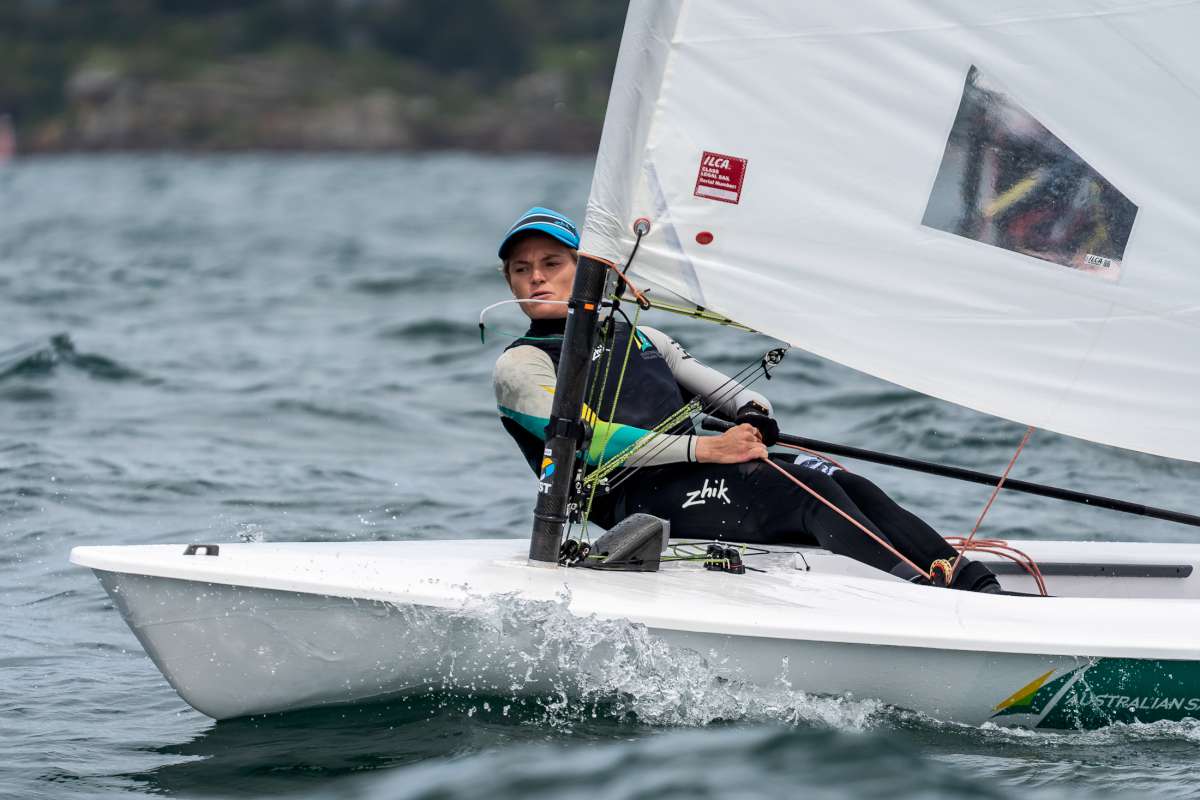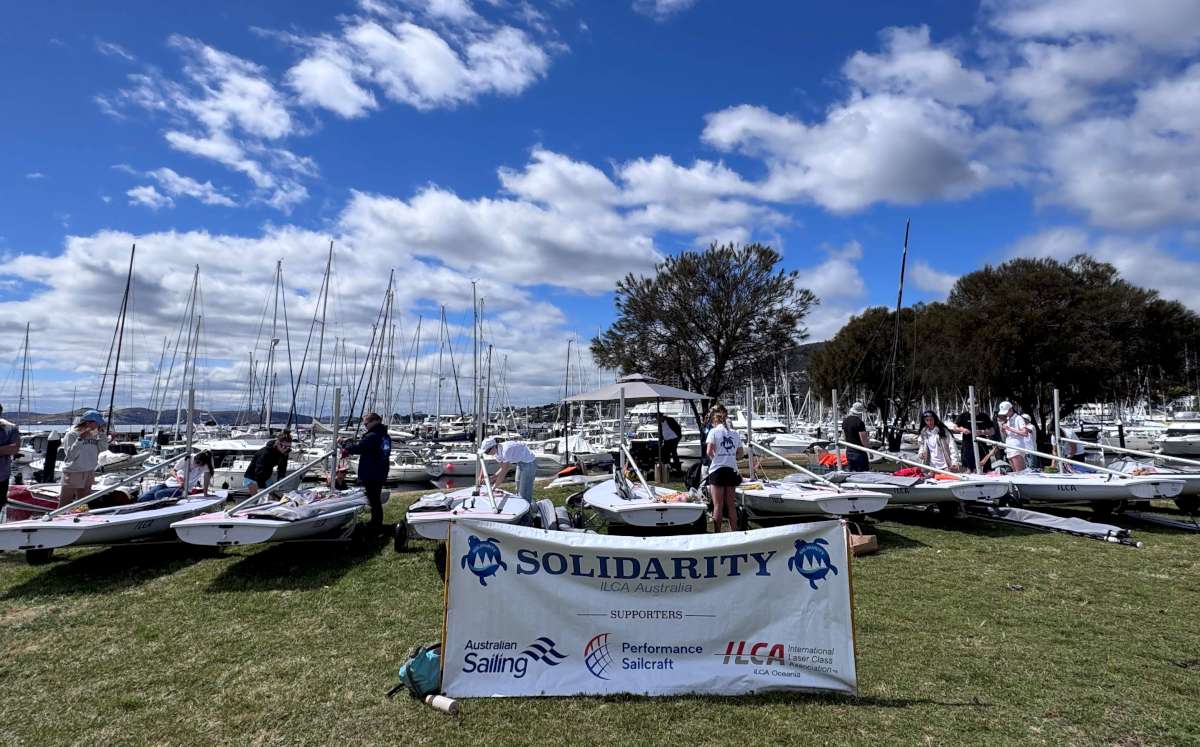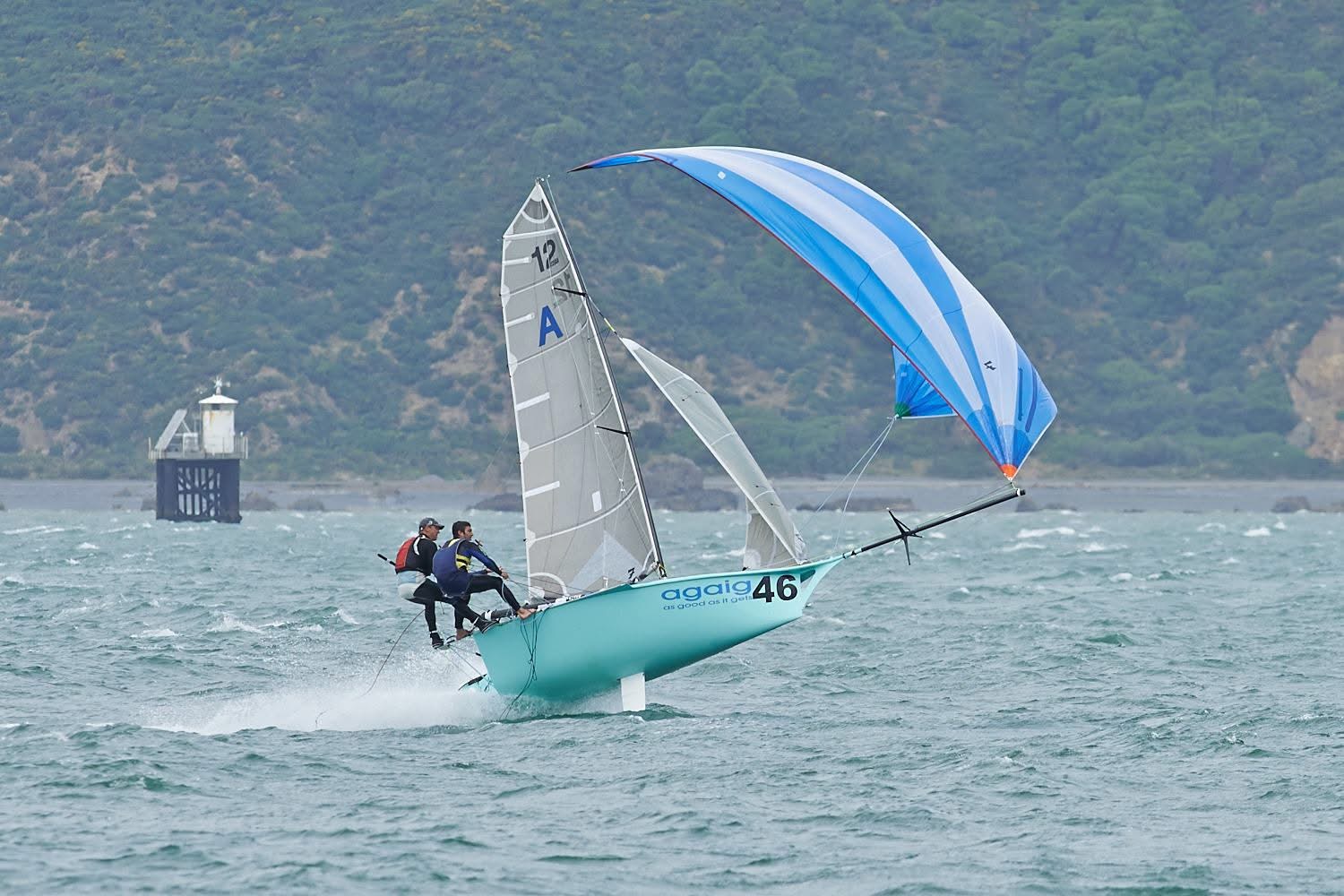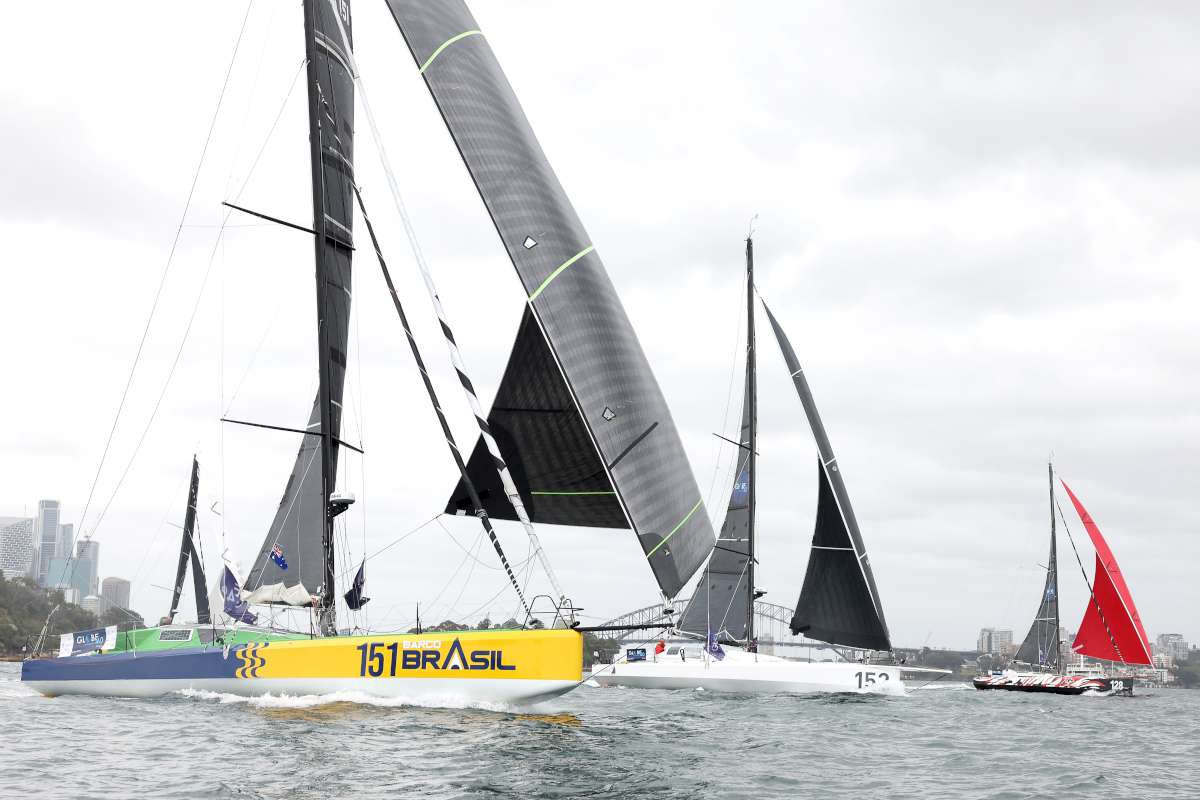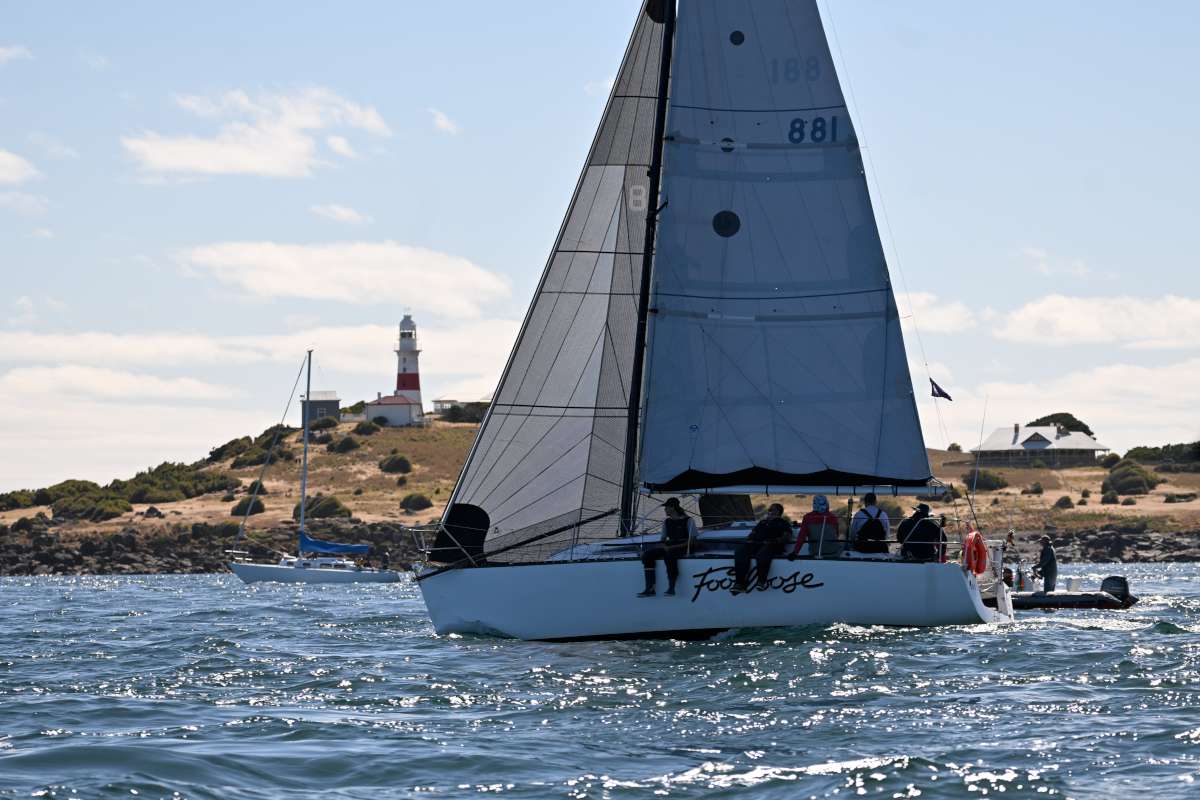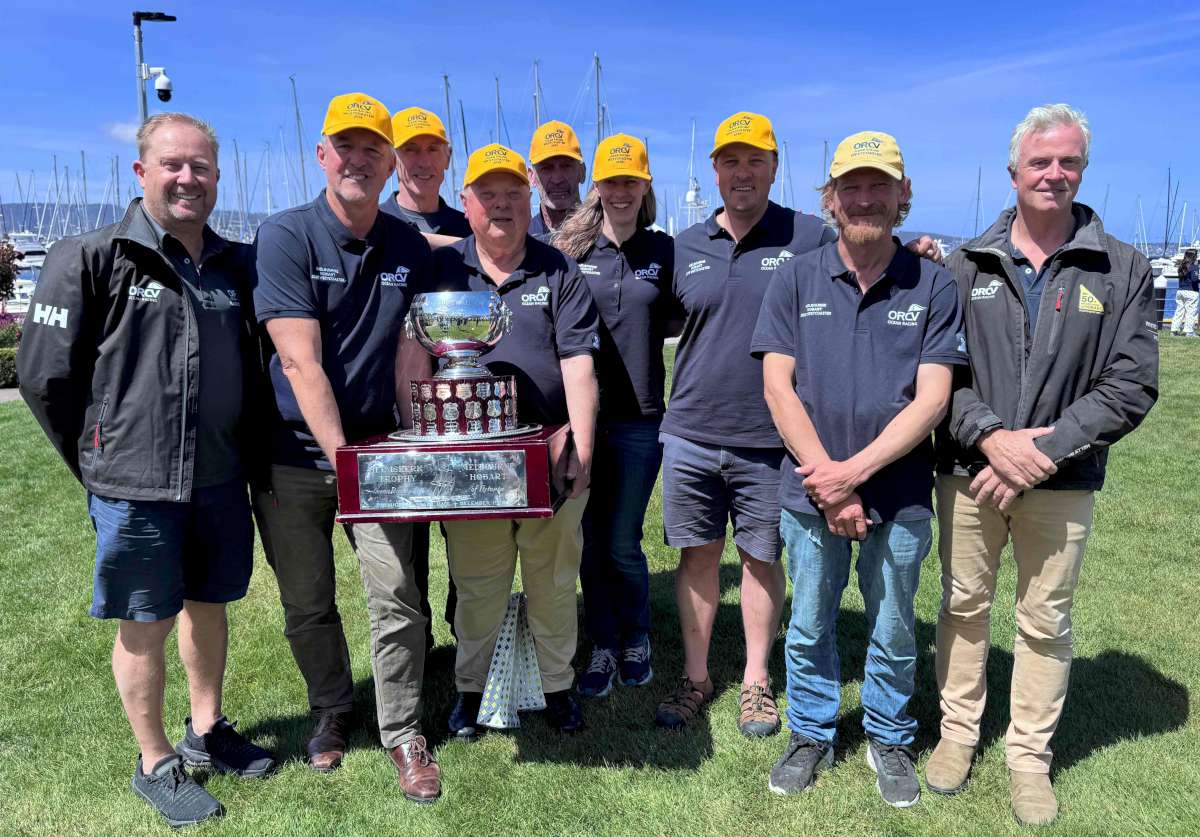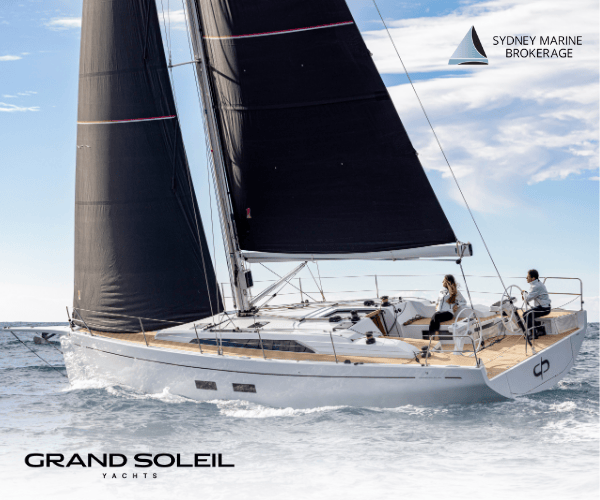World Heritage listed Hinchinbrook Island on far north Queensland’s east coast has become globally renowned for the tranquillity and beauty of its rainforest-cloaked ranges, network of fishladen waterways and tropical sand beaches.
You couldn’t ask for more sheltered and scenic waters in which to try out a newly purchased yacht.
Preparation
My step-father James and I had just bought a ten year old 7.8 metre Jim Young designed water ballasted trailer-sailer named Emma-B and we were itching to get her into the salt.
Neither of us had sailed since James had completed his global circumnavigation, sold his sloop and moved to the highlands a decade ago.
Thus it was with great enthusiasm that we started planning, preparing, repairing and provisioning the little yacht ready for a threeday jaunt to Hinchinbrook Channel.
One of the most difficult pre-departure challenges was convincing my wife, Natalie, to bring along Sylvia our toddler. At times, she could be quite demanding (Sylvia that is, not Natalie) and we worried that the confines of shipboard life might be too much for her.
In the end it was settled: with a box of Lego, a big bag of books, some pencils and paper, a packet of plastic animals, lots of music and a brand new sticker book – we should be able to make it through one weekend at sea.
We also thought it might be a good idea to let Sylvia stretch her legs, however, the
one disadvantage of Hinchinbrook Island is that almost all the beaches are on the east side – the west side has only one place to put ashore; The Haven at Scraggy Point.
Of course, this drawback is countered by many advantages, including the idyllic surroundings, ultra-calm waters and profusion of sheltered anchorages.
James and I studied Cruising the Coral Coast (the must-have manual for sailing the Queensland coast) and decided to launch at the boat ramp in Dungeness (Lucinda), sail north halfway up the channel, anchor in one of the creeks for the night, before heading to The Haven early next day to put in for a couple of hours of shore leave.
Legs fully stretched, we could then beat our way back to Haycock Island for our second night, before returning to Dungeness on day three.
The weather forecast was looking pretty good: SE 15 to 20 knots, scattered showers. You might be thinking “scattered showers” didn’t sound too good, but we long-time residents of the wet tropics have become accustomed to a little incessant precipitation and certainly try not to let it affect our holiday plans.
As it turned out, we had barely a drop of rain.
Dungeness
Finally, the morning arrived. We tethered the trailer and hit the road. We took it easy, shared the driving and after about three hours arrived safely at Dungeness to find an excellent, but busy, boat ramp.
Theoretically wide enough for four vessels, the ramp is divided by a fended pontoon alongside which a few tinnies waited while their trailers were parked or fetched from the extensive parking area.
Natalie and Sylvia frolicked in the shade of the adjoining park, while James and I set the rigging. We’d only had the mast up once before in the driveway at home, so we were quite pleased when, less than an hour later with a light offshore breeze to aid her entry, the fully rigged Emma-B slipped off the trailer to settle gently against the pontoon.
I parked the ute and hurried aboard. “Ahoy, me hearties!” I cheered.
Entry to Hinchinbrook Channel from Dungeness is a little tricky and requires careful navigation. The buoys marking the narrow passage through the shifting sand flats of the entrance share only a vague similarity with the buoys marked on our charts, both paper and electronic.
However, after carefully following a dogleg course, we entered the channel proper and turned the Emma-B northwards.
The Bluff
Sylvia had been behaving herself beautifully, singing songs to herself and pointing at the other boats. About the time we were alongside The Bluff (a distinctive cliff across the channel from Dungeness) she started to get bored and so I took her below to play with her toys.
About half an hour later, it was time for a look topside and, as I poked my head through the companionway, Natalie asked, “does this spot look familiar?” The towering granite walls of The Bluff were still looming off our starboard bow. We had made absolutely no progress!
The eight-horsepower Honda four-stroke was purring nicely, the mainsail was catching the slight stern breeze and the water was swishing satisfactorily past the hull, but we just weren’t getting anywhere.
We knew from the cruising guide that the tides could run at up to three knots, but with the engine and the mainsail both working for us, we should have been making an easy five knots through the water, enough to pull ahead even against a three knot current.
We discussed the situation, consulted the manual again, made a cup of tea, admired The Bluff a while longer and then angled away into the middle of the channel where we thought the current might flow more slowly, as indeed proved to be the case.
The bright pink track on the chart plotter displayed a little scribble next to the bluff and then finally began marking some progress further up the channel.
The Channel
The mountains ranging on both sides were covered in dense rainforest, which appeared to be thriving, despite the damage still evident from Cyclone Yasi two years before (CH September 2011).
In places along the shore behind the imperturbable mangroves, skeletal trees leant haphazardly across each other, wind-stripped limbs still bare and broken. In other areas great swathes of rampaging vines encumbered the struggling growth of the shattered forest trees.
Nevertheless despite, or perhaps because of this, we were struck by the magnificence of the vast expanse of wilderness stretching on all sides around us.
Although the boat ramp at Dungeness had been crowded and no doubt the nearby ramp at Port Hinchinbrook was also packed, there weren’t many vessels on the water. We decided that the boats must burst from the boat ramps and radiate in different directions, soon becoming widely scattered specks across the vast expanse of the north Queensland coast.
Gayundah Creek
We saw a few passing tinnies, a couple of distant white boats and a houseboat tucked comfortably in the lee of Haycock Island, but when we puttered into Gayundah Creek we were the only vessel in sight.
On the low ebbing tide we dropped our pick through the glassy water and settled back to enjoy the serenity and spot for crocs with a cold beverage in hand (us that is, not the crocs).
Small silver fish frequently broke the surface in shimmering splashing shoals while graceful white egrets stalked and stabbed at them from along the sand banks. The rich fertile fragrance of the rainforest mingled with the mangroves and mudflats, filling the air with a heady primordial aroma.
A rainbow arced softly through the mist on the mountains and the silence was broken only by the cries of the birds and Sylvia’s sweet voice singing “twinkle twinkle little star”. We all felt very relaxed.
Sand flies
The Emma-B is fitted with well-made flyscreens and you can be sure that we made full use of them once the sun started to sink. To be honest, the mozzies weren’t really a problem, even out on the deck at dusk.
The real problem was the sand flies. Too small to be held back by the mosquito mesh, the little blood suckers found their way in and made their presence known; mainly on poor Sylvia.
Nestled in the forecastle berth between her mother and me, she slept well through the first half of the night but then, perhaps due to her habit of kicking the sheet off, she started getting bitten.
At first she was restless, kicking and squirming. I woke to a sharp pain in my back reminding me that we needed to trim her toenails. Then she started squawking.
This continued until, after a good squirt of fly-spray and plenty of cuddling, singing and back-patting, silence once more descended.
Soon, all that could be heard was the snapping of the shrimp living their small but vital lives among the mangroves and the soft lap of ripples along the hull.
Scraggy Point
Only seconds later, it seemed, I was wrenched from my dreams by the beeping of the alarm
clock. Time to get up!
We had planned a dawn departure in order to work with the tides so, while Sylvia and Natalie stayed comfy below, James upped the anchor and I started the engine.
We gently wended our way out of Gayundah Creek. It was a beautiful Hinchinbrook morning. The rising sun enflamed the clouds clustered over the mountains and the entire spectacle was gloriously reflected in the glassy water slipping by beneath us as we made our way northwards towards Scraggy Point.
There wasn’t a breath of breeze and the engine produced a low background purr that in no way detracted from the serenity of the morning. I watched the reflection of the island slide by and felt very lucky to be there.
A couple of hours later, we eased into Scraggy Point on a flooding tide. Avoiding the buoys that mark the ancient aboriginal fish traps, we raised the centreboard and drifted softly onto the sand.
After running out the fore and aft anchor lines and discussing how we could do it better next time, the crew disembarked for shore leave, while the skipper set to replacing a broken slide on the headsail.
The Haven
Once ashore I decided to avail myself of The Haven’s facilities, provided and maintained by National Parks, and, after meandering a short way through the bushes, I discovered a crowded little campsite with a remarkably unscented longdrop dunny set well off to the side.
Nevertheless, let’s do as I did and linger here no longer than necessary and make our way back to the beach.
There I discovered Natalie and Sylvia happily submersed in crocodile infested waters.
True, the water was shallow and clear and you could see for many metres all around. True, there were other people here who would have told us had they seen anything dangerous. True, we had
seen no evidence of a croc (although we had seen many a likely ‘log-odile’). True, I had my finely honed folding knife in my pocket, ready to leap to the defence of my darlings should the situation demand it.
However, I did feel a bit uncomfortable, as indeed might anyone who has stood next to the giant girth of ‘Sweetheart’ the 5.1 metre boat-eating crocodile stuffed and displayed in the museum in Darwin.
So I persuaded Natalie that this perhaps wasn’t the best place for bathing. Soon, Sylvia was sitting nicely settled in a little freshwater runoff in the shade and I was relaxing again.
Sailing again
After a couple of pleasant hours ashore, we were back aboard and running with the currents down
towards Haycock Island.
The breeze had picked up by now and we were able to put Emma-B through her paces. She caught the wind beautifully and the sails set just right, although she was as we expected, very tender and quick to heel.
We could see a small rainstorm squatting ahead on the low ranges between Mount Bowen and Mount Diamantina and, as the wind began to freshen, we didn’t hesitate to reef the mainsail.
Soon, we were swishing along nicely, hitting six knots through the water and feeling like sailors again.
It had been a long time since we had locked wills with the wind and I don’t mind admitting that I sat gripping the mainsheet ready to spill the squalls whenever I thought the slant too severe.
James was outwardly very tolerant of my landlubber tendencies; although I’m sure I saw a slightly supercilious smirk lurking beneath his beard. As we rounded Leefe Peak the wind dropped away and I released my vice grip on the mainsheet.
We spent the night tucked in between Haycock and Hinchinbrook Islands, and, after spraying the mozzie screens and ourselves liberally with repellent, we slept undisturbed by sand-flies.
Dawdling back to Dungeness
Moseying our way back to Dungeness the next morning, flanked by a pair of dawdling dolphins, we were already discussing our next trip, “we’ll come here again when we sail up from Townsville,” we decided. “We’ll come here again and again.”
Emma-B was going to be busy.
– Seth Hartley: Seth is a freelance journalist whose greatest sailing adventure, so far, is an eight-month voyage from Trinidad to Cairns aboard a 34ft sloop. He enjoys walks on the beach and listening to music.
This article was first published in the January 2014 issue of Cruising Helmsman.






